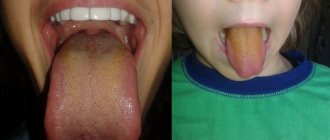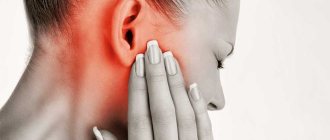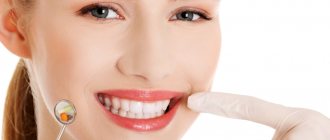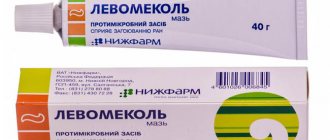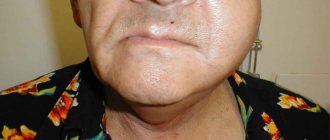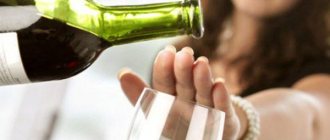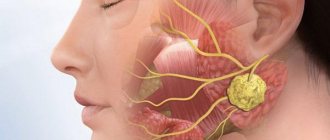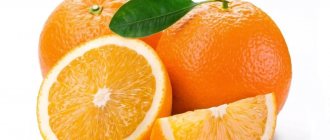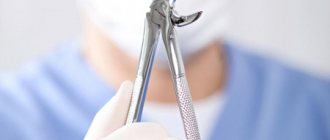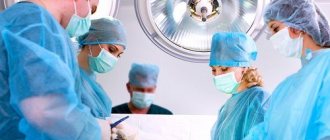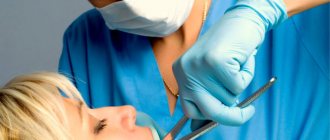Causes of the disease
Traumatic tooth extraction.
Alveolitis is often caused by a traumatic dental procedure. Injury can occur if a tooth is removed in fragments (parts). During the operation, sometimes the gums are damaged or the bone walls of the socket are partially destroyed. In this case, healing takes longer compared to uncomplicated removal and is often accompanied by the appearance of alveolitis.
Foreign particles entering the hole.
Sometimes pain after tooth extraction occurs as a result of the contents of the carious cavity, dental plaque, fragments of the extracted tooth, or bone fragments of the alveoli entering the socket. In addition, the cause of pain and alveolitis can be the destruction of a blood clot.
Failure to maintain socket hygiene.
Healing of the alveoli occurs due to the formation of a blood clot. This biological barrier protects the socket from infections and inflammation. After some time, the clot is replaced by newly formed bone tissue. It is not recommended to eat rough, hot or spicy foods within 24 hours after a dental procedure, as this can destroy the blood clot. In addition, brush your teeth and rinse your mouth with caution. Failure to follow the dentist's recommendations can lead to blood clot disruption, alveolitis and pain after tooth extraction.
Presence of infection.
Sometimes the cause of dental surgery is chronic periodontitis - inflammation of the tissues that surround the root. If you have had a tooth removed and its socket hurts, this may be caused by an infection getting into it.
Release form
The manufacturer is a Polish pharmaceutical company. The gel has a transparent jelly-like structure. The consistency of the substance allows it to be economically applied and evenly distributed on the mucous membrane of the gums, and prevents rapid rinsing with saliva and swallowing.
We suggest you read: When wisdom teeth grow, temperature
Ten- and fifteen-gram aluminum tubes with sealed edges are on sale. The tubes are screwed on with caps, under which there are protective membranes. Each unit is sold in a cardboard box indicating the production date and with included instructions.
The appearance of a “dry socket” after tooth extraction
Dry socket after tooth extraction is one of the complications of the dental procedure. Dry socket may affect older people, smokers, and women taking birth control pills. Sometimes a blood clot does not form at the site of the tooth and bone may be exposed, which slows down healing. 3-4 days after the dental procedure, a dull pain appears, which can be either acute or tolerable. The pain often seems to radiate towards the ear. A dry socket can cause bad breath or a taste in the mouth. Such a hole looks like this: there is no blood or pus on it, but the bone is exposed. In this case, you should consult a doctor to treat dry socket. To relieve pain, the doctor applies a bandage soaked in medicine to the dry socket.
Terms of purchase and price
To purchase Cholisal tooth gel, you do not need a prescription, since it is freely available and is an over-the-counter drug. You can buy it either in a regular stationary pharmacy or in an online store that sells pharmaceutical products.
The price for tubes of 10 g in stationary pharmacies starts from 200 rubles, and in online stores – from 185 rubles. The price for a 15 g tube is higher - from 408 rubles. in pharmacies and from 340 rubles. when purchasing online.
Buyers are interested in how much Cholisal costs.
The medicine can be bought at any pharmacy.
It can be ordered online at a discount and picked up the next day without paying for delivery. This is a common method; the drug will cost approximately 300-350 rubles (10 g).
In pharmacies you can find Holisal Dental in a 15g tube, the price of which is 200 rubles. The package includes an applicator for convenient application of the gel.
The product is sold without a doctor's prescription. Store it at temperatures from 0 to 24 degrees. There is no need to freeze Cholisal.
When purchasing, it is important to pay attention to the expiration date. It is no more than 3 years.
What to do if a tooth is removed
Stop the bleeding.
If you have had a tooth removed, your doctor will tell you in detail what to do in the first hours after the operation. For some time after the procedure, blood may flow from the hole. To stop bleeding, you need to place a cotton swab on the empty alveolus, bite it firmly and hold it there for 45 minutes. If bleeding continues, you should contact your dentist to prescribe a course of treatment after tooth extraction.
Do not injure the blood clot.
The blood clot that forms at the site where the tooth was is important for healing, so care must be taken to avoid traumatizing it.
The clot can be damaged by hard food, a toothbrush or a toothpick. Brushing your teeth is a must, but it should be done carefully. If oral hygiene is not maintained, the infection accumulates in the oral cavity and can cause pain and inflammation of the alveoli, which requires the doctor to prescribe treatment after tooth extraction.
Do not eat hot or cold food.
During the day you should not take very cold or hot food or drinks. Temperature changes lead to narrowing and dilation of blood vessels, which can cause bleeding from the socket. For the same reason, doctors do not recommend going to the bathhouse, taking a hot bath or shower. It is also not advisable to drink alcoholic beverages on the first day after a dental procedure.
Increased salivation in adults: causes and treatments
Increased salivation in an adult is a symptom of inflammation or disease of the gums, teeth or internal organs.
It is important not only to eliminate excessive salivation, but also to correctly determine its cause, otherwise the recovery will be temporary. Salivation is considered normal if the volume of saliva does not exceed two liters per day. It is involved in digestion, washing away pieces of food, remnants of drinks and bacterial activity from the teeth. Normally, the process of salivation is invisible to humans - we do not pay attention to it, like, for example, breathing. But if a failure occurs, then too much saliva causes discomfort.
With this disease, saliva accumulates in the mouth too quickly; you constantly have to make sure that it does not leak out and spit. It is inconvenient, unaesthetic, spoils the mood and causes discomfort. In the article we tell you what are the causes of increased salivation in men and women and how to treat it.
How to understand that salivation is increased: symptoms and signs of failure
Saliva is involved in many important processes occurring in the human body. When everything is normal, we do not notice that saliva:
● helps to pronounce words and sounds clearly and correctly;
● enhances the perception of the taste of food and drinks;
● participates in digestion - helps to chew food and also swallow it.
When salivation is increased, several processes are disrupted at once:
● the taste of food changes - salty food becomes too pronounced, and subtle nuances are not felt;
● problems with diction appear – pronouncing some sounds is problematic;
● it becomes painful to swallow food.
Location of glands
In addition to indirect signs, there are also clear, measurable criteria. If more than two milliliters of saliva is released within five minutes, the patient is diagnosed with increased salivation. The normal value is 2 ml.
Sometimes patients complain of false profuse salivation. This happens when there is injury or inflammation in the mouth and it may seem that there is more saliva than there should be, although the levels are normal: 2 ml in 5 minutes or 2 liters per day.
Causes of increased salivation in men and women
The volume of saliva secreted is controlled by the nervous system. When everything is in order with health, it happens naturally and unnoticed by a person. But when problems arise or diseases appear, the process is disrupted. A variety of factors can influence, but most often the cause of increased salivation in adult men and women is one of six factors.
- Oral diseases - gum inflammation, periodontitis, stomatitis, as well as cuts and burns. When bacteria enter the glandular tubules, the body begins to produce more saliva to get rid of them. This is a natural reaction.
- Digestive system problems - abnormal stomach acidity, pancreatic and liver diseases.
- CNS diseases - Parkinson's disease, trigeminal nerve damage, bulbar syndrome, migraine. With these diseases, the natural process of salivation is disrupted. Short-term impairment may occur due to air sickness, seasickness, or problems with the vestibular apparatus.
- Hormones - failures of the hormonal system, in particular the thyroid gland, menopause, diabetes mellitus lead to excessive salivation. Sometimes this is observed in adolescents during the restructuring of the body.
- Smoking and removable dentures can also affect it. Both of these phenomena irritate the mucous membrane, stimulating the overactive functioning of the glands.
- Taking medications - some medications have side effects of increased salivation or, as it is also called, hypersalivation. Most often these are those medications that contain iodine or mercury. For example: lithium, physostigmine, muscarine.
Pilocarpine, nitrazepam also lead to hyperactivity of the glands
What to do with increased salivation depends on the factors that caused it. In some cases, for example, when taking medications, the disease will go away without the intervention of a doctor.
Increased salivation in women during pregnancy
A common cause of hypersalivation in women is pregnancy. When a woman is preparing to become a mother, the hormonal background of the body changes greatly, and with it many processes: blood circulation, digestion.
Pregnancy affects all systems at once:
● endocrine;
● nervous;
● digestive.
Often, expectant mothers experience problems with their teeth and gums, such as gingivitis. This disease also affects the amount of saliva produced.
Healthy and inflamed gums
Causes of increased salivation at night in adults
During sleep, processes in the body go slower, including the secretion of saliva. But glitches may occur. Here are the main factors that cause too much saliva to be produced during sleep:
● breathing through the mouth, not through the nose - often happens when a person sleeps on his back;
● malocclusion – the mouth remains open during sleep, the tongue dries out and the body decides that more saliva is needed;
● poor sleep - too much sleep when a person is not sure that he is sleeping. This can lead to the body considering the dream as reality and secreting saliva as if during the day.
This is what an open bite looks like - the tongue protrudes forward
Treatment of increased salivation
Depending on the cause of hypersalivation, different doctors provide treatment:
● dentists solve problems of local oral diseases;
● endocrinologists for hormonal disorders;
● gastroenterologists, if the problem is diseases of the digestive system;
● neurologists, if the failure is due to problems with the central nervous system.
A dentist will help identify the cause, and a therapist will refer you to a specific specialist.
Treatment with medications
In addition to eliminating the causes associated with disruption of the internal organs, the doctor may prescribe medications that eliminate the symptoms. For example:
● riabal;
● scopolamine;
● platiphylline.
Taking medications without a doctor's prescription is prohibited!
We do not recommend purchasing or taking medications without consulting a doctor. Each drug has contraindications and side effects: from glaucoma to liver, heart, and vascular diseases.
You should not risk your life and health to save time or money on a visit to the clinic.
Botox treatment
For short-term symptom relief, Botox injections are sometimes used. It blocks nerve signals, reducing tubule activity. This method helps to quickly get rid of the problem, but, unfortunately, the effect does not last long.
Facial massage and muscle relaxation
It will help if the cause is related to nervous tension, stress or central nervous system pathologies.
Removal of glands
It is prescribed extremely rarely, only in cases where all other methods and elimination of the causes of the disease have not helped. Removal, even partial, can damage the facial nerves.
Traditional methods
To relieve symptoms, you can use folk remedies. Especially if salivation appears due to seasickness, air sickness, stress, or while taking medications.
Traditional medicine offers two homemade recipes for rinsing after meals:
● mix one tablespoon of peppermint tincture with 200-300 ml of warm water;
● mix black tea with two tablespoons of crushed fresh raspberries, strain and cool.
Correcting your diet will also help: eliminating potatoes, pasta, bread, pumpkin and other starchy vegetables.
Make an appointment at the SoloDent clinic by phone or through the website. We will determine the cause of increased salivation and help you get rid of this unpleasant disease.
Source: https://www.solodent.ru/patient/section/povyshennoe_slyunootdelenie_u_vzroslykh_prichiny_i_sposoby_lecheniya/
Healing of the extracted tooth socket
METROGYL DENTA® is used for complex treatment and prevention of post-extraction alveolitis (inflammation of the socket after tooth extraction). The use of the drug helps eliminate inflammation by suppressing the activity of pathogens inhabiting the oral cavity. To prevent post-extraction alveolitis, the tooth socket after extraction is treated with METROGIL DENTA® gel and then the drug is applied for 7-10 days 2-3 times a day. METROGYL DENTA® has a good safety profile and is suitable for the treatment of periodontal diseases and mucous membranes of the cavity, starting from the age of 18.
Compound
The medicinal properties of Cholisal are determined by its composition:
- Choline salicylate is the main active ingredient, suppresses the inflammatory reaction and the release of substances that irritate pain receptors;
- cetalkonium chloride is an antiseptic that destroys microbes, is less active against fungi and viruses, and also has an analgesic effect;
- gel alcohol-containing base – helps ensure reliable fixation of the drug on the mucous membrane;
- Anise oil – plays the role of a flavoring and aromatic additive, enhances the antibacterial and disinfectant effect.
One gram of dental gel contains the following substances:
- Cholinesalicylate;
- Cetalkonium
Auxiliary ingredients include:
- anise extract;
- water;
- methylcarbinol;
- glycerol;
- hyaetellosis;
- paraben E-218;
- propyl parahydroxybenzoate.
The main component of the drug, choline salicylate, is a derivative of phenolic acid.
It has an anti-inflammatory effect and blocks substances that cause the pathological process.
Dental gel penetrates deeply into the cells of the mucous membrane, relieving discomfort.
Cetalkonium chloride is an antiseptic with antimicrobial action. It has poor activity against certain viruses and fungi.
In appearance, Cholisal is a gel-like substance that has no color.
The product smells like anise oil.
Consequences after tooth extraction
Removing any tooth, even baby teeth, is a surgical procedure. During the operation, soft and hard tissues of the gums and jaw are injured.
Depending on the complexity of the procedure, injuries can vary in severity. Less traumatic is the removal of a baby tooth, and the most difficult are operations to remove the last teeth in a row of an adult.
Most often, complications occur after the removal of a wisdom tooth. The wisdom tooth may have an abnormal position in the mouth.
In addition, its numerous roots can be twisted together, which makes the removal process very difficult.
The location of the molar at the very end of the dentition does not allow the surgeon to have free access to the operation site and makes it difficult to see.
Due to all these difficulties, injuries and, as a consequence, complications most often occur after surgery.
The consequences can be of various types.
The most common:
- pain in the socket area;
- bleeding;
- swelling of the gums;
- inflammatory process;
- infectious periodontitis;
- "dry" hole.
Pain after surgery is a natural reaction of tissues to external interference. The removal itself is performed under local anesthesia, but as the freeze begins to subside, the pain may intensify.
Symptoms: salivation, increased gum sensitivity
The symptoms of stomatitis may differ slightly depending on the form of the disease. Children experience redness of the mucous membranes of the mouth, swelling and swelling of the cheeks, lips, and gums. A whitish coating appears on the tongue, ulcers form in the corners of the mouth. The child becomes whiny, refuses to eat, has restless sleep, and has a fever.
We invite you to read: A wisdom tooth grows horizontally into an adjacent molar: reasons, what to do if there is pressure, removal in the lower and upper jaw
Symptoms of stomatitis in adults:
- increased salivation;
- discomfort on the palate and mucous membranes of the oral cavity;
- increased sensitivity of the tongue;
- bursting blisters, ulcers on the palate;
- pain while eating.
Associated symptoms:
- heat;
- irritability, weakness;
- inflammation of the lymph nodes;
- vomiting or loss of appetite;
- headache;
- constipation
In addition, there may be increased production of saliva and a strong green coating on the tongue.
Pain may occur in the erosion zone, and the pathology is accompanied by the death of the affected cells of the mucous membranes.
The white or gray sores take on a round or oval shape, and the border takes on a red tint. The number of formations per square centimeter of skin can in some cases be very high. A spot forms on the mucous membrane, rises, resulting in the formation of aphthae, which is covered with a gray coating.
Purpose of Cholisal gel
Dentists recommend using Cholisal for the following diseases:
- stomatitis of any etiology;
- periodontitis;
- gingivitis;
- cheilitis (inflammation of the lips);
- oral candidiasis (thrush of the oral mucosa);
- lichen planus in the oral cavity;
- inflammation in the hoods above the wisdom teeth.
Cholisal is also recommended for use in the following cases:
- for damage to the oral cavity: from dentures, injuries, after surgical intervention;
- for pain relief during teething.
Analogs
A cheap analogue of Cholisal for children over 12 years of age and adults can be Dental drops; the cost of 10 ml is 26 rubles. They contain mint, camphor and valerian and temporarily relieve pain, but with severe inflammation of the mucous membrane and the presence of ulcers, they can, on the contrary, increase it. The following medications can help your child with teething:
- Carmolis children's phytogel 20 g – 450 rubles;
- Dentinal nature gel 20 ml – 630 rubles;
- Pansoral first teeth 15 ml – 320 rubles;
- Kamistad baby 10 ml – 270 rubles;
- Kalgel 10 g – 385 rubles.
We suggest you read: Acute focal pulpitis: symptoms and treatment
They are no less effective than Cholisal, but their cost is higher.
Metrogyl Denta contains 2 antimicrobial components - metronidazole and chlorhexidine, so it copes with inflammation in the oral cavity better than Cholisal and is used for:
- acute and exacerbation of chronic gingivitis, periodontitis;
- ulcers on the mucous membrane;
- stomatitis;
- consequences of tooth extraction and wearing dentures.
The disadvantage of Metrogyl is the lack of a quick pain-relieving effect, so it is not prescribed for teething.
The difference between Holisal and Holisal Dental is the name and design of the packaging, and the price. In fact, this is one and the same drug, since the composition and concentration of the active substance are completely the same.
Kalgel is a stronger pain reliever than Cholisal, as it contains an effective local agent - lidocaine. It also contains the antiseptic component cetylpyridinium chloride. And the anti-inflammatory activity of Kalgel is much lower. Therefore, both drugs can be used for teething and stomatitis, but when treating gum inflammation, it is better to choose Cholisal.
Kholisal has several analogues:
- Kalgel. The gel eliminates pain, prevents the spread of infection and relieves gum inflammation. Kalgel is considered the safest drug for babies. Cholisal has a multifaceted therapeutic effect. Price – from 275 rubles.
- Kamistad. The gel has an analgesic effect and is used for adults and adolescents over 12 years of age. Kamistad Baby is allowed from 3 months of age. The medicine has a number of side effects. It is contraindicated during pregnancy. Children's gel costs 220-260 rubles.
- Dentamet. The product is used for stomatitis, gingivitis, periodontitis. Contains chlorhexidine and metronidazole. Price – from 128 rubles.
- President Effect. The gel from an Italian manufacturer contains chamomile extract, which has an anti-inflammatory effect. A pronounced antiseptic result is achieved due to the presence of chlorhexidine in the composition. The rules of application are similar to the application of Cholisal. After fixing the gel, leave the product for about 15 minutes. Price – 230-260 rubles per 30 ml tube.
- Perio-Aid0.12%. The medicine contains chlorhexidine and cetylpyridine. They produce a bactericidal effect that lasts up to 9 hours. Xylitol reduces acidity inside the mouth. Price – from 265 rubles.
The cost of Cholisal often forces you to buy cheaper analogues.
The final choice should be entrusted to a specialist who will select the most effective therapy.
Prevention and treatment of alveolar inflammation
The more complicated the operation, the more injuries are caused to the gums and jaw and the higher the risk of complications. This entails prolonged healing of the hole and increases the risk of infection.
In addition, when a doctor has to remove a diseased tooth in parts, foreign objects may get into the alveolus during the procedure. This may be a small fragment of enamel or the contents of a carious tooth cavity.
It also happens that the tooth extraction was successful, there was no bleeding, and the pain subsided soon after the operation.
But after a couple of days, the gum became swollen and a throbbing pain appeared in the area of the damaged gum. This can happen if a blood clot formed in the socket has been damaged.
Read also: Ultrasonic toothbrush
Sometimes damage can occur during a hygiene procedure: brushing your teeth or rinsing your mouth.
Due to blood clotting, a clot forms in the wound, which serves as its protection during the first days after surgery.
By sealing the hole, it gives damaged tissues time to regenerate.
Therefore, it is very important to protect this clot from mechanical damage. This is especially true in the first days after surgery.
To protect the blood clot from damage, it is recommended:
- do not rinse your mouth in the first 24 hours after tooth extraction;
- brush your teeth with great care, avoiding contact of the brush with the tooth socket;
- do not consume hot food and drink;
- visit the sauna and take a hot bath;
- Avoid rough and hard foods, preferring soft foods.
Any violation of these rules can lead to damage to the blood clot and inflammation.
In older people, a clot may not form and the socket may contain an open area of jaw bone. This also does not contribute to the rapid healing of the wound.
For the prevention and treatment of possible complications, it is recommended to use Metrogyl. For the first use, the gel is squeezed out of the tube onto a sterile cotton swab and applied to the wound.
After the hole begins to heal, the gel is applied directly to the gum with a finger or using a cotton swab. To prevent inflammation, Metagyl is recommended to be used twice a day.
Can be used to prevent complications in children. The child must be at least six years old.
Cholisal for periodontal disease
Instructions for use of the drug Cholisal in this case indicate that sometimes periodontal disease cannot be cured using the usual method of application. Cunning moves are required. First, of course, you need to eliminate the cause of periodontal disease, go to the dentist and remove tartar from under the gums. With periodontal disease, the gums move away from the teeth; of course, you can lubricate them superficially, but you also need to treat their inner part.
There is a very cunning and accessible way to apply the drug under the gums.
- Dental gel Cholisal is squeezed into a small container.
- Take a regular small volume syringe
- The gel must be placed in the syringe, as is usually done with solutions; some part will still end up in the syringe
- Now you need to go to the mirror and open your mouth
- Next, start using a syringe to inject Cholisal medicine into the gum pockets
- This is not difficult to do in the lower periodontal pockets
- The upper ones must be lifted and the drug injected.
You need to do this three times a day. Of course, do not forget to lubricate and massage the surface of the gums. The drug is not absorbed into the blood, as the instructions for use tell us. But during pregnancy, this method is still not suitable, since doctors do not recommend using Cholisal in large doses, and in this case the dose of the drug is really large, but periodontal disease still needs to be treated.
